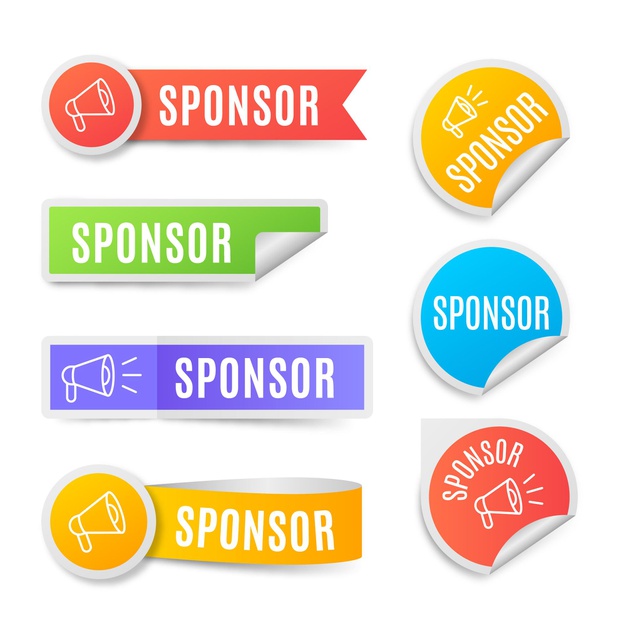How To Get Sponsored For Your Brand? The Best Guide For Beginners

Are you willing to get the sponsorship for your branding purpose? If yes, then you must consider some of the essential things in the light of this matter. To get the sponsorship of your brand, you must develop a proper strategy that can help you get the desired sponsorship at the right point in time.
In the Forbes Study, it is mentioned that if you want to develop your business, then getting the right sponsorship is crucial. You can also get the idea from here how to get sponsored on YouTube?
There are several essential points that you must consider while you are planning to get the sponsorship of your brand. You must not take things casually here while you are a beginner for getting your brand’s support. Now, the billion-dollar question is how to get sponsored?
How To Get Sponsored: Different Ways To Get The Sponsorship
You can get sponsorship for your brand; you must follow some of the crucial points in the light of this matter to get a better insight into it. Therefore, let’s explore some of the essential issues on how to get sponsored.
1. Give Your Proposal
You must set a wow proposal that can attract the interest of the sponsor towards your brand. You present your CV to the interviewer to catch their attention for getting the job, so you must also develop your proposal n the same attractive way to get the business order in your brand name.
There are certain factors that you must consider from your end while developing the proposal. Therefore, let’s explore some of the essential points in the light of this matter to get a better understanding of it like:
- Tell the story of your company.
- Describe all the things that you want to do?
- Describe the demographics of your audience in the best possible manner?
All the factors mentioned above are crucial for getting the sponsorship. You must not consider things casually here. You must also know how to get sponsored on YouTube?
2. Offer Some Incentives To The Sponsor

Here are some of the tips that you can follow:-
- Give your sponsor a free booth for the trade shows and exhibitions.
- On event, promotional flyers, and banners, place the names of your sponsors or the logo.
- On social media post, or in the blog post, place your sponsor’s name; it will please them to give you the sponsorship.
- In all your promotional gear, use the logo of your sponsor.
- Encourage your social media followers to share and like your sponsor’s content.
You must give offers to your sponsor that pleases them, and it can help you multiply your business. You must think proactively in this regard, how to get sponsored?
3. Offer Them A Minimum Risk Solution

Instead, you ask for a smaller amount for the sponsorship and give your sponsor the privilege to select the risk-free option. It will encourage your sponsor to invest the money in your brand. How to get Sponsored on YouTube?
You must think proactively in this regard. You cannot consider things for granted. This strategy will work well if you want to work well with your sponsor. It will help your brand to move forward. It will develop your business in the best possible manner.
4. Form Partnership With Most Established Companies
You must go for the most established brand to develop your brand in the best possible manner. The reason is it will help you to build your brand image in the best possible way.
Select that brand to help your business give the boost to move forward to the next level. You must have the right strategy in place to develop your business in the right direction. In the Hub spot report, you will understand how best marketing practices can help your brand grow.
It can help your business grow in the right way as you will get additional advantages from your co-partnering brand. You must have an idea how to get sponsorship? It will help you to improve your brand image in the best possible manner.
5. Study What Your Potential Sponsors Want From You
There are several essential factors that you must consider from your end that can help your business to grow in a better manner. Correctly do your homework before you get the sponsorship from your sponsor. How to get sponsored is one of the prime questions that most entrepreneurs have in their minds?
You must remember some of the essential points in the light of this matter to get a better idea about it. You must understand how to get sponsored? From the below-mentioned points.
- Do your sponsor take part in any of the recent events?
- Are there any changes in the form of leadership?
- Do some current events effects the sponsorship?
- Are you launching a new product?
Hence, some of the essential factors can help your brand develop your business in the best possible ways. You must not ignore these points at the time of your branding. The more you can think pro-actively, the better you can understand the crucial points in this regard. From this article, you can get the insights of getting sponsorship.
Conclusion
Remember one thing that “Champions are not made in the ring they are merely recognized there.” If you want to get the best sponsor for your brand, you must make your research work in the best possible manner. The only thing that matters here is applying your mind and the consensus to boost your brand image in the best possible way.
You must not lose your sponsor due to your small but irrevocable mistakes that can develop doubt in your target audience’s minds. The only thing you cannot compromise here is not to get the sponsorship from the best person. You must have the right idea of how to get sponsored by the right company and person for your brand.
Read Also:














